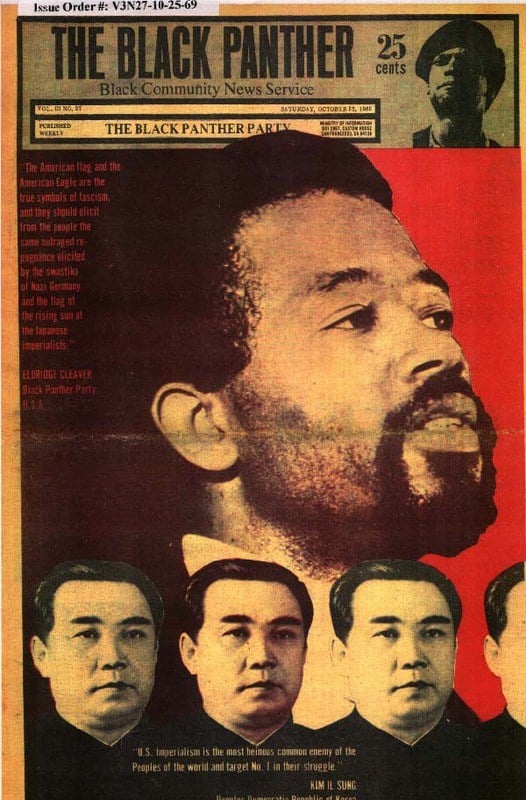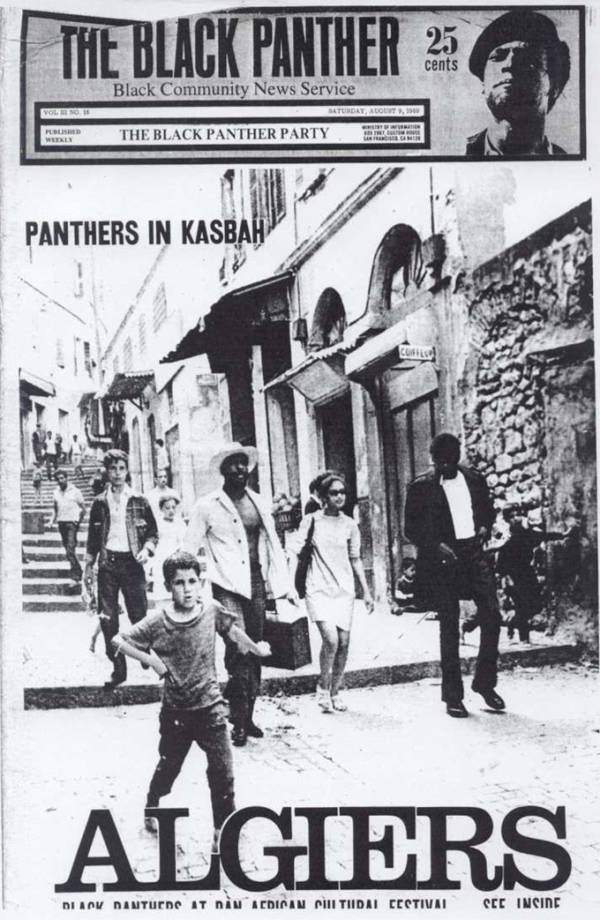North Korea and China

The Freedom ArchivesEldridge Cleaver and Kim Il-sung on the cover of The Black Panther.
The Black Panther Party forged ideological and diplomatic bonds with North Korea and China, with members drawing inspiration from each government’s respective social teachings and receiving public support in return.
Eldridge Cleaver, one of the most prominent and controversial members of the American Black Panther Party, visited North Korea in 1969 in an effort to elevate the party’s political influence and international standing.
“Today, the (Democratic People’s Republic of Korea) is an earthly paradise, with an advanced socialist system, highly developed technology, a brilliant national culture and a healthy people,” he wrote. “Definitely on the move towards even greater achievements.”
The country’s leader, Kim Il-sung — who maintained terse relations with the United States government — praised the Black Panthers’ “just struggle to abolish the cursed system of racial discrimination of the US imperialists.”
The Panthers particularly took to the Korean idea of juche: “adapting ideology to fit your circumstances.”

Jack Garofalo/Paris Match/Getty ImagesA poster of Mao Zedong hangs in an office in Harlem, New York City, 1970.
Chinese communist ideology also played a major role in the American party’s development. Indeed, the American Black Panther Party mandated that each member read Mao Zedong’s “Little Red Book.”
“A revolution is not a dinner party, or writing an essay, or painting a picture, or doing embroidery,” the book reads. “A revolution is an insurrection, an act of violence by which one class overthrows another.”
In 1971, famous Panther Huey Newton led a ten-day delegation to China, where thousands of fans at every airport greeted him.
“We support the Black Panther Party, down with US imperialism,” some signs read. “We support the American people but the Nixon imperialist regime must be overthrown.”
The Panthers’ visits to both of these countries were heavily supervised, and likely gave the leaders a skewed view of what was actually a turbulent time for the Chinese and North Korean people.
Algeria

The Black Panther/It’s About TimeThe Black Panther August 9, 1969 cover featuring Cleaver surrounded by fellow Panthers and local children in Algeria.
Algeria became a symbol of hope for black people around the world when it achieved independence from France in 1962. As such, the country hosted several revolutionary movements, including the Black Panthers.
The group set up its international embassy in Algiers, where the Algerian government gave them a building, a living space, a stipend, and the ability to issue visas and grant asylum to other members of the movement.
For this reason, many Panthers who were forced to flee the United States found refuge there.





